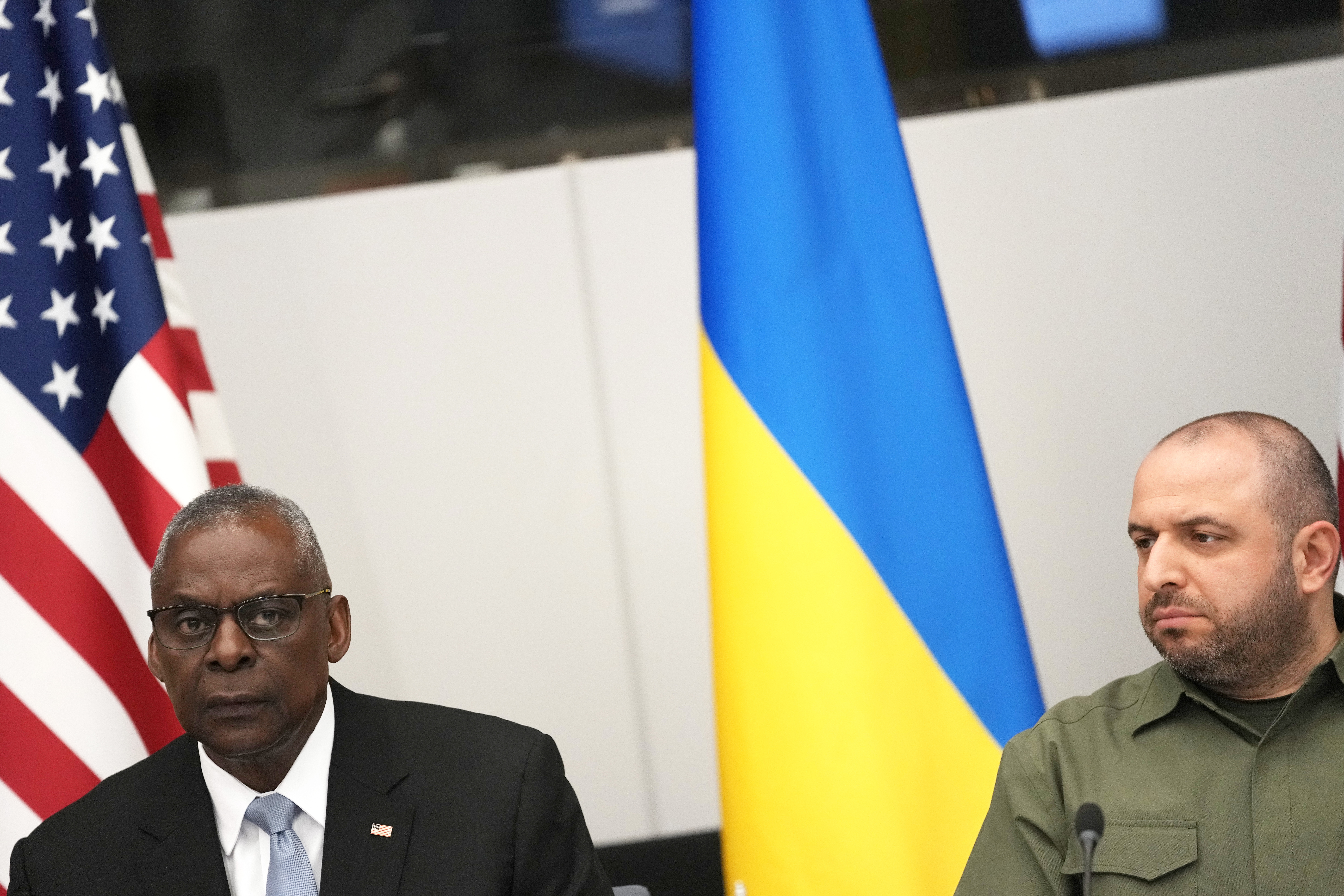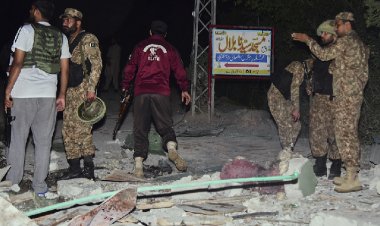Ukraine, allies clash over F-16 training
U.S. and European officials are pushing back on Kyiv’s claim that they could be training more pilots faster.


BRUSSELS, Belgium — Ukraine and its Western supporters are at loggerheads over the speed and scale of fighter pilot training, with Kyiv pressing U.S. and European partners to expand the program and the allies countering that Ukraine’s pilots aren’t yet ready to start flying its incoming F-16 jets in large numbers.
Ukrainian officials insist they have 30 pilots ready to start training on the aircraft and complain that there aren’t enough spots available at training facilities in the U.S. and Denmark. They argue that they urgently need more pilots trained to fly the jets as soon as they arrive in order to help counter Russian forces on the frontlines.
But U.S. and European officials gathered here to coordinate the transfer of weapons to Ukraine said they are working deliberately to sync up the number of pilots and maintainers graduating from training with the number of aircraft arriving in Ukraine this summer. The aircraft will arrive in tranches, they said. The schoolhouse in Arizona is able to train only 12 pilots at a time.
“When they field these capabilities, you want them to be able to field them in an effective way. An F-16 is no good if it’s eliminated on the first day,” said one senior Defense Department official, granted anonymity to speak about sensitive discussions.
The pilot argument marks the latest hurdle in Ukraine’s drawn-out quest for modern fighter jets. Kyiv began asking for the U.S.-made F-16s shortly after the invasion, but President Joe Biden was reluctant to give the green light. Finally last year he approved the third-party transfer of aircraft from Norway, Belgium, Denmark and the Netherlands, but the training program has been plagued by logistical challenges.
The DOD official pushed back on Kyiv’s claim that it has 30 pilots waiting to start training, adding that the pilots already in the pipeline are struggling with English language skills and the flying program.
“The training pipeline on F-16s is pretty meager,” the official said.
Western officials in Brussels Thursday said they are confident in their schedule for training enough Ukrainian fighter pilots to fly the first batch of new F-16s arriving in-country. They stressed the need to gradually ramp up the program to ensure Ukraine can operate and maintain the aircraft, including pilots, maintainers, and the infrastructure to support them.
“It’s not just the pilots you have to have,” Joint Chiefs Chair Gen. C.Q. Brown, a career F-16 pilot, told reporters after a meeting of the Ukraine Defense Contract Group. “Maintenance is also a key part of that, and training the maintainers.”
“You want to have the complete package: That means the team, the number of airframes, weapons to go with it, spare parts. You have to have everything,” said Kajsa Ollongren, defense minister for the Netherlands, on the sidelines of the meeting.
Denmark, Norway, the Netherlands and Belgium have pledged to send Ukraine more than 60 U.S.-made F-16s overall, but officials have not provided details about the timeline. The goal is to start delivering the jets to Ukraine this summer, Brown said.
Illya Yevlash, a spokesperson for the Ukrainian air force, said the training program requires “additional places” for pilots to learn the aircraft.
"There is a great need to train Ukrainian specialists, both pilots and engineers. Of course, all this requires additional efforts, including retraining, learning from scratch, and modernization of aircraft systems,” Yevlash said. “A number of bureaucratic procedures and technical nuances remain. We are waiting for the planes as soon as possible.”
But a second senior DOD official also pushed back on Kyiv’s claim that the training program is too limited. Western officials want to avoid graduating too many pilots before Ukraine has received enough jets for them to continue training on, the official explained to reporters on the plane to Brussels. If pilots do not get enough flying hours, their skills begin to atrophy.
“If you don’t have an aircraft to continue to train on it’s kind of wasted energy,” said the second senior DOD official, noting that the current pipeline is “appropriate.”
The partners are looking at eventually expanding training to other locations as Kyiv receives additional aircraft, including French Mirage and Swedish Gripen jets, Ollongron said. But that’s part of the long-term strategy.
“They are transforming the whole Ukrainian air force into 100 percent NATO standard,” she said.












